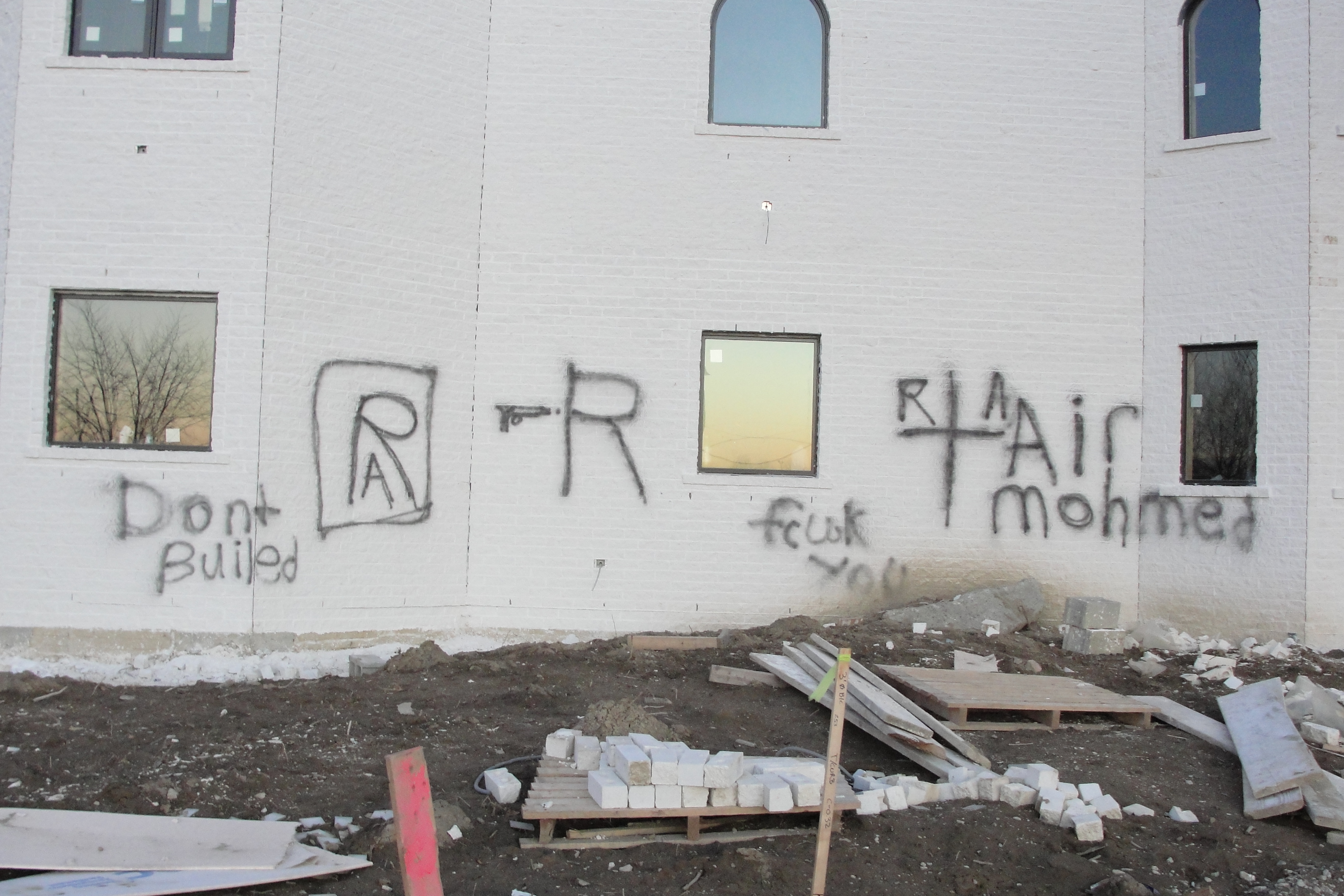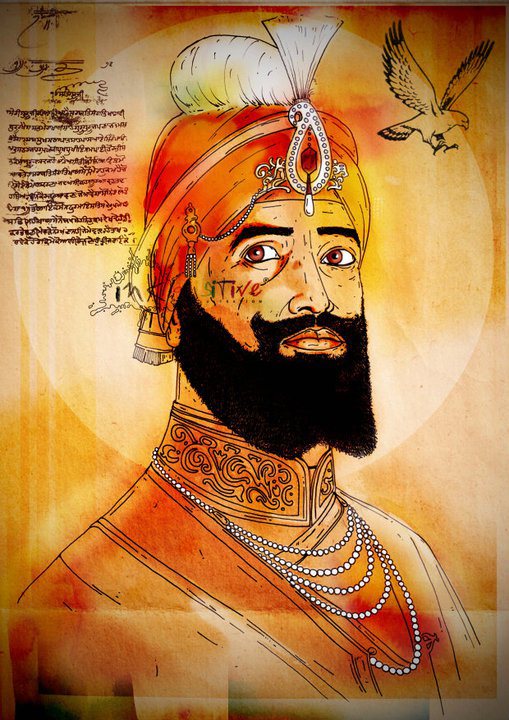
 Sikhs around the world will come together again to celebrate the Gurdgaddi of Guru Har Rai Ji again Sikh Vatavaran Diwas (environment day) for a second year in a row. On this day, Gurdwaras worldwide will focus kirtan and katha on the concept of kudrat, and participate in a number of hands on activities to protect our environment.
Sikhs around the world will come together again to celebrate the Gurdgaddi of Guru Har Rai Ji again Sikh Vatavaran Diwas (environment day) for a second year in a row. On this day, Gurdwaras worldwide will focus kirtan and katha on the concept of kudrat, and participate in a number of hands on activities to protect our environment.
Ask your Gurdwara to participate by:
- Focusing kirtan and katha on nature
- Hosting the Khalsa School Lesson on the Environment, created by the Sikh Research Institute
- Participating in a cleanup, tree planting, or children’s activity
All resources will be available on the EcoSikh website. Participating Gurdwaras should register to keep a database on worldwide activities, and respond with a ‘Yes’ on the Facebook invitation.
The purpose of Sikh Vatavaran Diwas is to bring Khalsa Panth together on issues of the environment. With Punjab ranking twenty-seventh out of thirty states in the environmental performance index (EPI), the need for Sikhs to connect Gurbani to the issues around them is real. The contamination of soil, land and water from intensive agricultural production remain high on the list of Punjab’s ecological challenges, in addition to industrial pollution and solid waste, low forest cover, and air pollution from thermal plants.
You may recall the murders of Elk Grove, California residents Surinder Singh and Gurmej Atwal, two senior citizens and turban-wearing Sikhs who, while on their daily walk, were shot down in a drive-by last year. Despite last October’s Day of Action by the community to spread awareness of the murder and to help get some new leads, to date the killer(s) have not been identified and no motive has been established. However, the murders of these Sikh grandfathers are suspected to be a hate crime.
The Elk Grove, California Police Department provided an update yesterday in their search for the killer(s) of Sikh seniors Surinder Singh and Gurmej Atwal, who were shot and killed last year while on their daily walk. Based on witness accounts, the police have now have a confirmed description of the suspect’s vehicle:
At a press conference this afternoon, police officials said the suspect drove a lifted full-size pick-up truck, tan or gold in color, with a standard-size cab, similar to the one pictured at left. They do not have details on the make or model year of the truck.
Initially, police had been searching for a pick up truck, but have now been able to provide a little more detail about the vehicle. The investigation is still ongoing and the police are seeking more information, with a reward offered of $57,000. The Elk Grove Police Department can be reached at (916) 714-5115. If you live in northern California, spread the word about the suspect’s vehicle. Someone out there knows something that will help solve this crime.

…the vandalism happened between the evening of Feb 5th and the morning of February 6, 2012. The graffiti included vulgar language, racial epithets, the use of what appears to be a cross, a large drawing of a gun, and references to the attacks of September 11th.
SALDEF is urging law enforcement to classify the vandalism as a hate crime and prosecute the perpetrators, who have yet to be identified. Anyone with information about the attack are being encouraged to contact the local police department directly.
As you can see in the photo, the graffiti states “Don’t build,” and makes reference to the Prophet Muhamm ad. While the spelling and grammar are poor, it seems safe to assume the perpetrator was fueled by Islamophobia of some sort.
ad. While the spelling and grammar are poor, it seems safe to assume the perpetrator was fueled by Islamophobia of some sort.
We talk a lot about anti-Muslim bigotry here at The Langar Hall (as Jodha did on Monday), and it’s been at times disturbing to see comments on our posts reflecting the anti-Muslim sentiment in our community. Some who consistently make it a point to distance themselves from Muslims in every way and in every situation might struggle with this stark reality: the well-being, safety, and dignity of our community here in the US (and many other parts of the diaspora) is intimately connected to that of the Muslim community.
Let me first take the opportunity to thank the bloggers of TLH for welcoming me to this blog. A few might recognize me from americanturban.com, and I’m excited about the opportunity to engage with the audience on this blog in discussing many of the issues we face as a community, and particularly in the United States.
Most of my early education in Sikh history came from comic books, namely those published by Amar Chitra Katha, based in India. My father purchased every title related to Sikhism that was released by this company — covering the stories of the Sikh Gurus to those of Sikh legends and heroes — and I loved reading and re-reading these comic books until I knew the stories by heart.
It was a great introduction to Sikhism that captured my imagination. As I got older, I moved on from these comics to literary works on Sikh history that filled my growing mind with more knowledge and detail.
I started reading those comic books almost 30 years ago (I’m astounded as I write that number), and I’ve recently come across a new effort to bring such Sikh stories to today’s young audiences.
Gyan Khand Media has recently begun producing a new set of Sikh-based comic books. While now based in India, author Daljeet Singh Sidhu saw the opportunity for such a comic book after living in the west:
When Daljeet Singh Sidhu wanted to introduce his three-year-old son to Sikh heroes and history, he was not at a loss of words. But what he did not have, was a story that his boy could see, feel and later read. That’s when it struck Sidhu; that Sikh history has many heroes, but no graphics. So after 12 years in the US, he packed his bags and moved back to India to chronicle Sikh history, its great gurus and warriors and present them in the comics format. That’s how www.sikhcomics.com, a Sikh comics project, was born.
Gyan Khand Media has currently published three titles covering the stories of Baba Deep Singh, Guru Tegh Bahadur, and the Battle of Saragarhi. Many more are planned, and I had the opportunity to download and read the first two titles using Amazon’s Kindle app on my mobile device.
 It isn’t new in our community. A colonial official promises us money, land, and riches. Hundreds of thousands of Sikh javaans found themselves in the deserts of Iraq, the jungles of Burma, or even in the mountainous regions of France during WWI and WII seeking greater opportunities. One need not blame the individuals, but is there a space for a structural conversation in our community about our role in the world of global capital and neo-imperialism?
It isn’t new in our community. A colonial official promises us money, land, and riches. Hundreds of thousands of Sikh javaans found themselves in the deserts of Iraq, the jungles of Burma, or even in the mountainous regions of France during WWI and WII seeking greater opportunities. One need not blame the individuals, but is there a space for a structural conversation in our community about our role in the world of global capital and neo-imperialism?
Poverty and the need to survive may indeed be motivating factors. But do we run the risk of being dispensable pawns in a Great Game? My fellow langa(w)riter, Brooklynwala and even JasdeepSingh in the comments section, bravely wrote about this larger issue in criticizing the core in the “right to serve” campaign. The criticism for those that may not remember is not that Sikh don’t have a ‘right to serve’, the bigger question is what exactly are we serving?
A reminder of this question became apparent in a news article I came across over the weekend.
Communities on the periphery of the Indian State, be they Sikhs, Kashmiris, Christians in Nagaland, or even Bengalis and Bangladeshis have long seen the brutality of the “world’s largest hypocrisy.” Despite claims of democracy, progress, and growth, the facade is held together by a sadistic security state. Here we see its face. What is not unique is the instance caught here on a video that was to be used to psychologically and collectively terrorize; what is unique is that the video has made it to the public.
The video has begun to leak into worldwide news outlets, but has not raised the proper level of concern and outrage in the Indian State. There are many brave individuals in India that fight for human rights and dignity; there are many more that are silently complicit.
The video shows BSF (Border Security Force) soldiers torturing a Bangladeshi man. Human Rights Watch in 2010 had documented the grave human rights abuses, committed by these soldiers. Titled “Trigger Happy“, the report documented the deaths of over 500 people due to the hands of the BSF since 2006. The Border Security Force will not be unknown to those that seek justice in Punjab. The BSF was known to have committed wide-spread human rights violations in the Punjab; this, too, was documented by the Human Rights Watch.
For those that may have friends or family that don’t believe widespread torture, murder, and rape occurs under the name of “Indian security,” here is your evidence:
 First off, my sincere apologies to all in delaying the posting of this entry for far too long. Over winter break, nearly 20 students participated in the Jakara j.Korps initiative that seeks to explore the issue of immigration. Here is a photo-essay composed by Josh Singh.
First off, my sincere apologies to all in delaying the posting of this entry for far too long. Over winter break, nearly 20 students participated in the Jakara j.Korps initiative that seeks to explore the issue of immigration. Here is a photo-essay composed by Josh Singh.
During winter break 2011 members of the Jakara Movement were brought together for the first annual SUJH Alternative Winter Break to examine the issue of immigration first-hand by visiting the so-called ground zero, the Mexi-Cali border. The issue of illegal immigration continues to be brought to the forefront as witnessed in the divisiveness this issue caused among 2012 Republican primary candidates and the recent rise of nativist sentiment that has been fueled by deteriorating economic conditions. In 2006, huge protests calling for a more open and humane immigration policy were lead mostly by our Chicano/a and Latino/a brothers and sisters. The Sikh-American response to this issue however has been largely indifferent and silent. Through this trip, our goal was to break down commonly held conceptions about undocumented migrants and their journey into the U.S. (sujh=becoming aware). One of the most common misperceptions among people is that illegal immigration is a Latino-centric issue and therefore primarily deserves attention from that community. However, as seen in the LA times article earlier this year highlighting the increasing number of undocumented Punjabi workers in the U.S. (1600 were caught and detained in 2010 alone), this is hardly the case. It is imperative for us to stand in solidarity with other communities, especially on issues we have a personal stake in. Otherwise, how can we expect them to support issues that are deeply important to us?
Oscar nominated director, Ashvin Kumar today offers a free preview of his film on the twenty year military presence in Kashmir, ‘Inshallah, Kashmir: Living Terror,’ a film that documents the treatment of the Kashmiri people at the hands of half a million Indian military troops. The film reveals through personal stories the experience of torture, enforced disappearances, and extrajudicial executions that have swept the region since 1989.
Here’s a short preview:

Chances are you’ve probably heard about Tonight Show host Jay Leno’s joke last week that has angered a lot of Sikhs in the US and around the world. In the segment, the voiceover stated, “Here’s a look at Mitt Romney’s summer home on Lake Winnipesaukee,” as a photo of Darbar Sahib was shown.

The New York group Sikhs for Justice has gone so far as to file a complaint with the Federal Communications Commission (FCC) and a California based Sikh doctor has filed a lawsuit for libel against Leno and NBC in the superior court of California. A petition to NBC is also circulating, which has over 4,000 signatures so far. The petition, in part, states:
…the sentiments of Sikhs worldwide are off limits to his monologues and cannot be used further his TV ratings. The Right to Speech under the First Amendment to the United States Constitution excludes defamation and spreading hate, incitement and false advertising.
I found this new video that Mandeep Sethi released last month beautiful and inspiring. Shot in London, the young San Francisco-based hip hop artist links up with a dhadi jatha for a freestyle session unlike any other.
I’ve always loved the power, poignancy, and rhythm funkyness of dhadi jathas. Sikh and Punjabi public education through music, in a sense. These same characteristics are at the heart of hip hop and draw many of us to it, including talented artists like Mandeep. As Public Enemy’s Chuck D stated years ago, “Rap is CNN for black people.”
A few years ago, a friend of mine gave a compelling presentation about the parallels between hip hop and dhadi at SikhRI’s Sidak program in San Antonio, TX. Mandeep Sethi was not in the room, but clearly he had the same thought. Hope you enjoy it.


Since the inception of Sikholars: Graduate Sikh Conference, we have featured it here on The Langar Hall. The past two years have been huge successes and the third year will prove no different. A terrific agenda of evidence and research-based topics, as well as current thinking and new ideas will be presented by graduate students and professionals in various fields to challenge you and get you thinking.
As always, this year, Sikholars will offer a balance of well-known experts along with new faces and a stronger international representation. Students and professionals will come together from all across the globe and have the opportunity to learn from each other, to interact and form personal and professional relationships and to focus on learning and spreading knowledge.
Everyone is invited to come to CSU East Bay on February 18th & 19th, 2012. For more information: www.sikholars.org
Below the fold, I’ll post the abstracts of this year’s presenters.
Here on TLH, we look forward to sharing stories about young Sikhs pursuing their passion.
YouTube, Lenovo, and Space Adventures are running a competition to find an amazing space experiment and 16-year-old Pranav Singh is one of the finalists! If he wins, his experiment will be carried out on the International Space Station and streamed live from space on YouTube.
You can view Pranav’s video below and learn about his experiment here. Don’t forget to VOTE! You can vote each day until January 24th. Pranav is a finalist and has a good chance to have his experiment picked! Remember, he is only 16-years old!
As you may have noticed, today is a national day of action to protest the Stop Online Piracy Act and the PROTECT IP Act, two bills being decided on in US Congress right now. Tons of sites, including Wikipedia, are on a 24-hour blackout to protest the bills and urge action.
Needless to say, we at The Langar Hall are deeply concerned about this threat to online freedom and encourage our readers to take action and spread the word.
I spent this weekend in Fort Lee, New Jersey across the river from Manhattan at the Surat-Lalkaar Conference, “Kaur Voices: Exalt, Express, Empower.” As discussed previously, this event was a new collaboration between organizers of the popular Surat Conference in NY/NJ and California’s Jakara Movement. Never having attended a conference put on by either group, I was curious what the weekend would bring and eager (and a bit nervous) to help facilitate dialogue in our community about gender, sexism, and intimate violence.
Perhaps others will also have report backs and reflections on the conference in the coming days and weeks (feel free to share your thoughts in the comments), but for now I wanted to share a few highlights, a few aspects of my experience as both participant and a facilitation at Surat-Lalkaar while it’s fresh.
What struck me the most this weekend was simply the theme of the conference: issues of gender and gendered violence in the Punjabi Sikh community. As I was co-facilitating an intense discussion about a case study (based on a real situation) about child sexual abuse in a Sikh family, I looked around at the dozen or so Singhs or Kaurs in my group and realized I had never talked about this issue with a group of Sikhs. Nor had the rest of the participants in my discussion group.
A shared experience of nearly everyone in the group (and likely everyone at the conference) was the resounding silence about domestic violence, sexual assault, and child sexual abuse in our families, our gurdwaras, and our communities. There was a sense from many that these issues are indeed problems in our community, but problems that are hard to know the scope or seriousness of because no one talks about them openly. Many participants saw a tendency in our Sikh families to brush any “problems” under the rug to preserve the reputation or “honor” of the family.
As many of us in the US and around the world have been celebrating the beginning of a new year this past week as well as  the Gurpurab of Guru Gobind Singh, a new draconian law has been brought upon us in the United States with near silence from the mainstream media. On New Year’s Eve, President Obama signed into law the National Defense Authorization Act, which includes provisions that allow the US military to round up and indefinitely detain people, including US citizens, without any charge or trial.
the Gurpurab of Guru Gobind Singh, a new draconian law has been brought upon us in the United States with near silence from the mainstream media. On New Year’s Eve, President Obama signed into law the National Defense Authorization Act, which includes provisions that allow the US military to round up and indefinitely detain people, including US citizens, without any charge or trial.
Obama himself originally threatened to veto the bill if the language of indefinite decision wasn’t taken out. Yet he proceeded to sign the bill into law as we move into 2012, perhaps giving him the legacy, as Human Rights Watch director Kenneth Roth states, ” as the president who legalized indefinite detention without trial or cause.”
The American Civil Liberties Union (ACLU) states:
We are extremely disappointed that President Obama signed this bill even though his administration is already claiming overly-broad detention authority in court. Any hope that the Obama administration would roll back those claims dimmed today. Thankfully we have three branches of government, and the final word on the scope of detention authority belongs to the Supreme Court, which has yet to rule on the scope of detention authority. But Congress and the president also have a role to play in cleaning up the mess they have created because no American citizen or anyone else should live in fear of this or any future president misusing the NDAA’s detention authority.
 This season, Americans are spending $465 billion, according to the National Retail Federation and a substantial portion of that is on gifts. Luckily, the final days of the year are a chance to give in a different kind of way and by doing so, gain a benefit – namely, contributions made to a charitable organization by December 31st count as a deduction on your 2011 tax return.
This season, Americans are spending $465 billion, according to the National Retail Federation and a substantial portion of that is on gifts. Luckily, the final days of the year are a chance to give in a different kind of way and by doing so, gain a benefit – namely, contributions made to a charitable organization by December 31st count as a deduction on your 2011 tax return.
In Sikhi, there is the tradition of dasvandh – or giving a tenth of your seva, time or profits. The concept of dasvandh was implicit in Guru Nanak’s own Gurbani in the line: One who works for what he eats, and gives some of what he has – O Nanak, he knows the Path (SGGS p 1245).
While it’s not clear how much the Sikh community actually participates in this tradition (perhaps we just don’t discuss it publicly), it’s nevertheless clear that giving is an integral element of our faith. According to the Stanford Center on Philanthropy and Civil Society, the fact that 35 percent of all American giving went to religious organizations in 2010 reflects how closely bound many of us are with our place of worship. In 2011, the United States now ranks the highest in terms of charity in a massive global survey that put the nation in fifth place just last year. According to those surveyed, two out of three Americans said they donated money to charity (65 percent), more than two out of five volunteered their time (43 percent) and roughly three out of four helped a stranger (73 percent). Finally, according to a new study by the Center on Philanthropy at Indiana University in nearly 90 percent of certain households, women are either the sole decision maker or an equal partner in decisions about charitable giving.
Gendercide is a well-known problem in India. The BBC and ABC 20/20 have highlighted this issue. The low sex-ratio in Punjab, India shows how the soil, which gave birth to Sikhi is not devoid of this problem. The land on which our Gurus proclaimed the equality of women when others considered her impure has now become the dumping ground for unwanted baby girls. Their pure bodies are thrown onto piles of garbage for dogs to nibble away. Dead fetuses are stuffed into water wells.
A seminal research study conducted by Monica Das Gupta on selective discrimination against female children in Punjab states that Punjabi Sikh women are highly educated and well-treated in Punjab compared to other states. The harsh reality is that a rise in “status” has not changed the value of women. Women can be loved and cared for, but still under valued. They can be highly educated and treated well, but families want one of these daughters not two. But two sons would be okay. The value of daughters and sons is displayed when couples develop family-building strategies. How many children to have? If we have one daughter or two, will we be content with another daughter? Should we have only one son? Studies show that common answers to these questions are strongly rooted in a distorted value system, which reinforces the secondary status of women and allows for structures to be created to perpetuate this inequity. Thus, value systems and structures produce a circular cycle of mutually reinforcing each other.
The Sikh Gurus gifted us a value system that does not permit this secondary status of women. However, many have chosen not to implement it in their lives. It has even seeped its way into how Sikhi is practiced. Women are not allowed to do all kinds of seva at the Harmandar Sahib and our granthis/ragis’ kathaa most often highlight how a Sikh woman went to the Guru to request only a son.
If Sikhi is a key element to any solution for gendercide within the Punjabi Sikh community, wouldn’t kathaa/sikhyaa in the Gurdwara be the most logical place to start? We do enter the house of our Guru to understand and reinforce our Sikh value system.
The legal banning of the burqa and niqab has once again been in the headlines this last week, b ut this time beyond Europe, in Canada (or as Tanmit from G.N.E. called it last week at Lahir, “America’s pagh”).
ut this time beyond Europe, in Canada (or as Tanmit from G.N.E. called it last week at Lahir, “America’s pagh”).
Minister of Citizenship, Immigration, and Multiculturalism Jason Kenney, known for his conservative and anti-immigrant policies, announced that new Canadian citizens will now be forced to remove the burqa or niqab while taking their oath of citizenship.
According to the Associated Press,
Jason Kenney said most Canadians have misgivings about Islamic face coverings and said new Canadians should take the oath in view of their fellow citizens…
The Conservative minister called the issue a matter of deep principle that goes to the heart of Canada’s identity and the country’s values of openness and equality. He said women who feel obliged to have their faces covered in public often come from a cultural milieu that treats women as property rather than equal human beings.
 For many of us school is out and the holidays are upon us. Throughout the season, many Sikhs throughout the world engage in seva to support members of the community in which they live. We expect this year to be no different.
For many of us school is out and the holidays are upon us. Throughout the season, many Sikhs throughout the world engage in seva to support members of the community in which they live. We expect this year to be no different.
We hope that commenters will use this section to highlight events or drives that may be occurring in their local communities. Here is one such effort by the youth of the Fresno Jakara Movement group.
Part of something larger and hoping to set an example for other communities, the Sikh youth of Fresno are coming together to organize their annual Sikhi, Seva, Cinema event. More information can be found on their facebook page. They are hosting fundraisers for items that will be distributed to those that are currently houseless in the city. The event is completely youth driven and they are calling for other Sikhs to be generous with their time on December 17 or generous with their money to assist others. The national press has highlighted the preponderance of poor in rural central California. We hope other Sikhs become active in their communities, just as these youth are doing.




